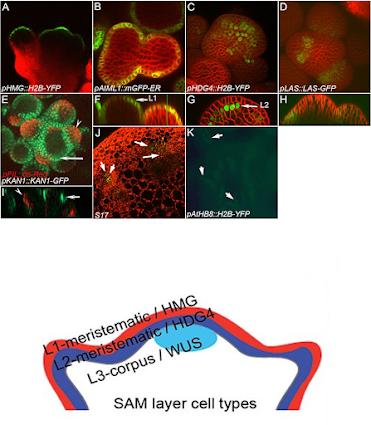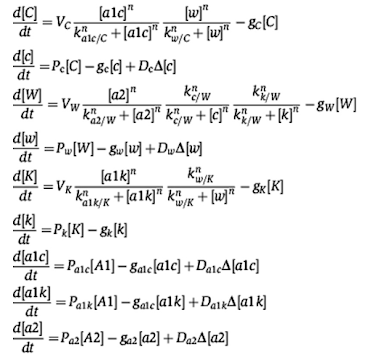We are interested in exploring the molecular and cellular basis of cell identity transition. The process of cell identity transition involves conversion of transient temporal signals into stable genetic circuits that involve feed-forward and feedback control of gene activation. Therefore, we employ dynamic methods of transient perturbations, in cell-cell communication, followed by cell-type specific genomics and live-imaging to obtain a dynamical view of molecular (Display various expression of reporters and SAM map presented in Yadav et al., Development 2014) and cellular behaviors (Display Movie 1 and Movie 2 from Development 2004), and use time-resolved data to develop mathematical models (Display math models figs in Yadav et. al., 2011, 2013 and Mikahl et al., 2018) of stem cell maintenance in shoot apical meristems of Arabidopsis thaliana.
Specifcally, we are working on the regulation of stem cell maintenance which involves balancing of the growth and differentiation mediated by WUSCHEL, a homeodomain transcription factor (TF). WUS accumulates at a higher level at the site of synthesis, the rib meristem (RM), then diffuses into neighboring cells, thus forming a concentration gradient (Display fig 1 from the current proposal-Fig. 1). WUS represses differentiation-promoting factors in the central zone (CZ) stem cells. As the stem cell descendants are displaced away from the influence of the WUS gradient, they differentiate into leaves/flowers in the peripheral zone (PZ) and cells located beneath the RM differentiate into the stem. The precise regulation of the WUS gradient is critical for stem cell homeostasis which is controlled by CLV3, a secreted peptide that activates receptor kinase signaling to repress WUS transcription. In this context, we are exploring,
1. The mechanisms of how WUS activates and represses transcription in same cells.
2. The mechanisms regulating the WUS gradient.
3. The mechanisms of WUS-regulated growth patterns.

